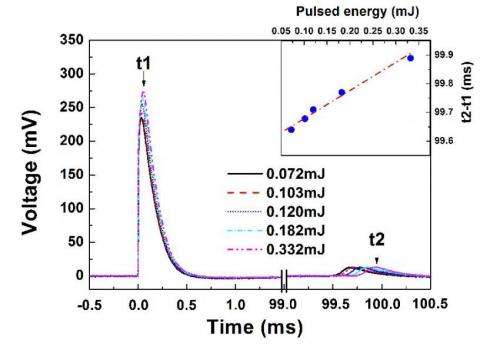A new method to detect infrared energy using a nanoporous ZnO/n-Si photodetector

Experiments aimed at devising new types of photodetectors have been triggered by the increasing use of optoelectronic devices in personal electronics, cameras, medical equipment, computers and by the military. Professor Zhao Kun and co-researchers at the State Key Laboratory of Petroleum Resource and Prospecting, part of the China University of Petroleum in Beijing, have proposed a new type of infrared photodetector.
Photodetectors, which can convert photons to electrical signals, are used to observe and measure the wavelength or energy of light, including infrared light, which is beyond the visible spectrum. Many different types of photodetectors have been widely used in optoelectronic devices, such as digital cameras or night vision goggles. Scientists around the world are constantly exploring the potential to devise, or are actually developing, new generations of photodetectors that feature new configurations or new materials.
Zhao and colleagues state in a new study, "Double peaked decay of transient photovoltage in a nanoporous ZnO/n-Si photodetector," that this ZnO/n-Si structure has an application as a new, simple and low-cost photo-energy detector for an infrared pulsed laser. The paper was published in SCIENCE CHINA Physics, Mechanics & Astronomy.
Zinc oxide (ZnO) is a low-cost and environment-friendly semiconductor. It has a wide band gap (~3.37 eV) at room temperature, so that only ultraviolet light (with a wavelength less than 400 nm) can be absorbed effectively. In terms of photodetector applications, ZnO and ZnO-based devices are routinely studied as an ultraviolet light photosensor.
Yet researcher Zhao and his group now report that when ZnO is combined with n-type Si, an interesting photoresponse is observed under near infrared pulsed light irradiation. "In the present work, we propose a type of infrared photodetector based on a nanoporous ZnO/n-Si structure, which is synthesized by a simple sol-gel method," they state in the study. "Under illumination of one infrared laser pulse, this porous structure exhibits a double peak on a millisecond time scale in the decay of transient photovoltage."
As the structure was irradiated by a pulsed laser with a wavelength of 1064 nm, one laser pulse with energy of 0.072 mJ triggered two peaks: a higher photovoltaic (HPV) peak with an amplitude of ~235 mV and a succeeding lower photovoltaic (LPV) peak with an amplitude of ~13 mV. The time interval (t2-t1) was ~99.64 ms; t1 and t2 represent the corresponding time of the related transient photovoltaic peaks (as shown in Figure 1).
When the pulsed energy increased from 0.072 mJ to 0.332 mJ, the amplitude of the corresponding higher photovoltaic peaks increased from ~235 mV to ~275 mV. In contrast, the amplitude of the LPV peaks remained almost the same, that is, ~13 mV. The authors posited that this particular photoresponse of the nanoporous ZnO/n-Si structure originated from the synergy of the photoelectric effect and the photo-thermal excitation process.
Most importantly, the time interval between the double peaks of transient photovoltage is highly sensitive to slight changes in the energy of the laser pulse. When the irradiated pulsed energy is increased, the time interval (t2-t1) increases linearly.
This characteristic indicates that the nanoporous ZnO/n-Si structure has the potential to be developed into a new, inexpensive photodetector for an infrared pulsed laser.
More information: Liu H, Fu C, Zhao K., "Double-peaked decay of transient photovoltage in a nanoporous ZnO/n-Si photodetector" Sci China-Phys Mech Astron, 2014, 57 (6): 1201-1205. DOI: 10.1007/s11433-014-5459-4
Provided by Science China Press



















